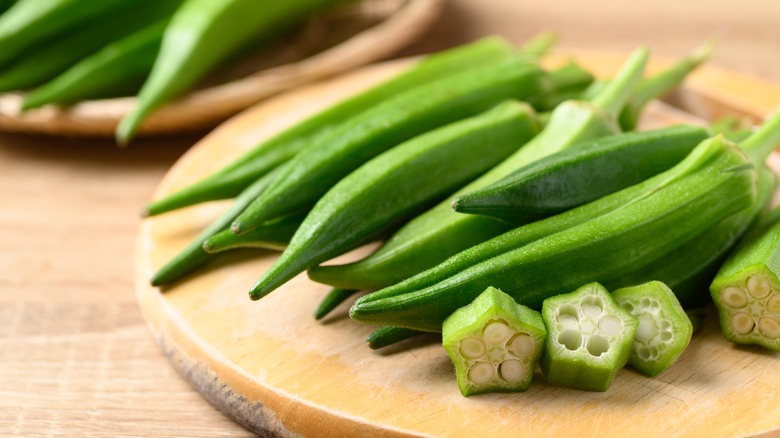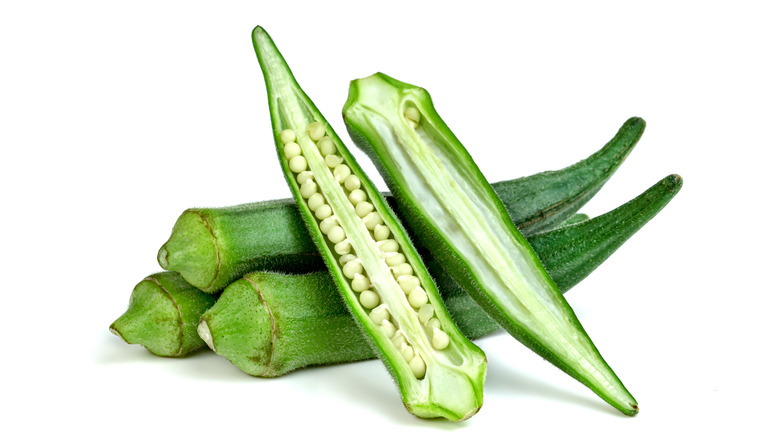The Okra Cooking Method That Could Win Over Its Haters
Okra is not exactly something that most people swoon over. Some love it in shrimp gumbo or deep-fried with aioli on the side. Others, like Jason Atherton of the Social Company restaurants, find that okra can become bitter if it's not prepared properly, per The Guardian. But as Herald-Mail Media claims, it's the slimy surprise on the inside that tends to make home cooks turn away in disgust.
So what's up with the slime anyhow? Well, as Food Republic explains, this mucilage (aka slime) can also be spotted inside aloe vera plants and contain glycoproteins and exopolysaccharides, which are sugar residues. When you heat up mucilage, its viscosity increases, which basically means that it gets slimier. As the source continues to explain, the slime in okra works well as a thickening agent, but it's also packed with soluble fiber, which may help to reduce blood cholesterol. In addition, okra may also play a role in decreasing oxidative stress, systemic inflammation, and specific cancer risks, per Consumer Reports. Still, these don't seem to be enough for people to jump on the slimy okra bandwagon.
Fortunately, Food & Wine has come up with an easy hack for getting rid of most, if not all, of the slime in okra, and all you need is a knife and a frying pan.
Opt for okra strips
There are actually quite a few ways to reduce the sliminess of okra, but we'll bet you haven't heard of this one before. Most people slice okra into small circular shapes, but according to Food & Wine, you should try creating strips instead. After you've got a pile of okra strips, stir-fry them in a pan until they're crispy and browned on the outside. Miraculously, the mucilage will have seemingly disappeared (or at least, most of it).
Several sources, like Sustainable Food Center and Slices of Blue Sky, note that stir-frying okra helps to mitigate that sliminess, and it's most likely due to the short but intense heat that the ingredient receives on the frying pan. Southern Living explains that as okra continues to cook, those sugars inside are released, which enhances that slimy texture; therefore, the opposite is also true, in that if you don't cook it for too long, then it shouldn't get overly slimy. Stir-frying will not only help with this, but it also adds some color and crispiness to the outside of the strips. For guidance on how to slice the okra into strips, refer to the Food & Wine source.
If you have a strong distaste for okra slime, you're not alone. But give this fruit one more try (yes, okra is technically a fruit, per Healthline) by slicing it into strips and then stir-frying it for textural contrast with little to no slime.

